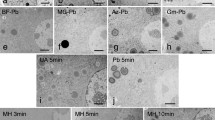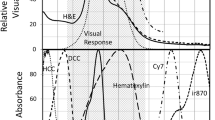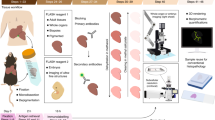Abstract
NEGATIVE staining has become widely accepted as a means of visualizing macromolecular structures under the electron microscope1,2. Its advantages lie in its simplicity and the high contrast which it offers. Many of the heavy metal salts used as negative stains, however, have not always proved satisfactory because of limited resolution and because of interaction with the specimen. In the course of studying the site of aldehydic groups in tropocollagen we developed a new method of negative staining. This gives delicate outlines of good contrast with macromolecular aggregates that are difficult to visualize with other techniques.
This is a preview of subscription content, access via your institution
Access options
Subscribe to this journal
Receive 51 print issues and online access
$199.00 per year
only $3.90 per issue
Buy this article
- Purchase on Springer Link
- Instant access to full article PDF
Prices may be subject to local taxes which are calculated during checkout
Similar content being viewed by others
References
Valentine, R. C., and Horne, R. W., in The Interpretation of Ultrastructure, Symp. Intern. Soc. Cell Biol., edit. by Harris, R. J. C., 1, 263 (Academic Press, New York, 1962).
Pease, D. C., Histological Techniques for Electron Microscopy, 346 (Academic Press, New York, 1964).
Gallop, P. M., Arch. Biochem. Biophys., 54, 507 (1955).
Author information
Authors and Affiliations
Rights and permissions
About this article
Cite this article
BARLAND, P., ROJKIND, M. Negative Staining with Osmium Tetroxide Vapour. Nature 212, 84–85 (1966). https://doi.org/10.1038/212084b0
Issue Date:
DOI: https://doi.org/10.1038/212084b0
Comments
By submitting a comment you agree to abide by our Terms and Community Guidelines. If you find something abusive or that does not comply with our terms or guidelines please flag it as inappropriate.



